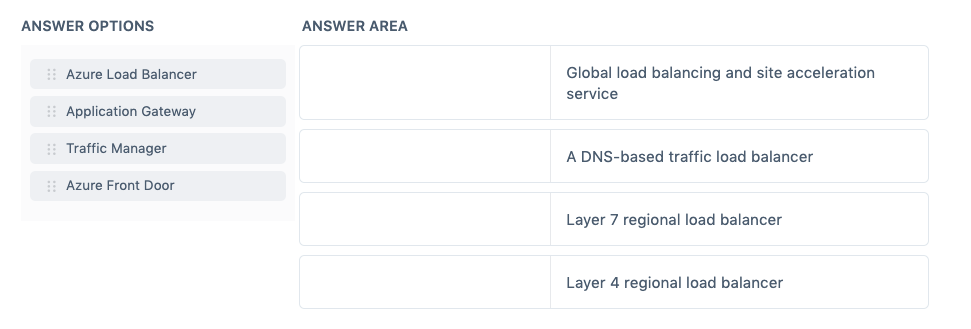Last updated on July 10, 2023
Azure Front Door Cheat Sheet
- A service that uses Microsoft’s global network to improve the availability and performance of your applications to your local and global users.
- It works at the HTTP/HTTPS layer and uses a split TCP-based anycast protocol to ensure your users connect to the nearest Front Door point of presence.
- Supports a range of traffic-routing methods and backend health monitoring options for various application needs and automatic failover models.
- With URL-based routing, it routes the traffic to backend pools based on URL paths of the request.
- You can configure more than one website on the same Front Door with multiple-site hosting.
- Use cookie-based session affinity to redirect the user session to the same application backend.
- Redirect traffic based on protocol, hostname, path, and query string with URL redirect.
- URL rewrite allows you to configure a Custom Forwarding Path that will copy any part of the incoming path that matches a wildcard path to the forwarded path.
- Front Door supports end-to-end IPv6 connectivity and HTTP/2 protocol.
Security
- If you need your domain name to be visible in your Front Door URL, you must have a custom domain. Front Door also supports managed certificates or custom TLS/SSL certificates.
- You can create custom rules to protect your HTTP/HTTPS workload from exploitation using Azure Web Application Firewall.
Azure Front Door Pricing
- You are charged based on the following:
- Inbound and outbound data transfers
- The number of routing rules
- Front Door has a limit of 100 custom domains. You will be charged for additional domains.
Validate Your Knowledge
Question 1
Question Type: Matrix Sorting Choice
Match the Azure service to the correct description.
Instructions: To answer, drag the appropriate Azure service from the column on the left to its description on the right. Each correct match is worth one point.
For more Azure practice exam questions with detailed explanations, check out the Tutorials Dojo Portal:
Azure Front Door Cheat Sheet References:
https://azure.microsoft.com/en-us/services/frontdoor/
https://docs.microsoft.com/en-us/azure/frontdoor/front-door-overview
























